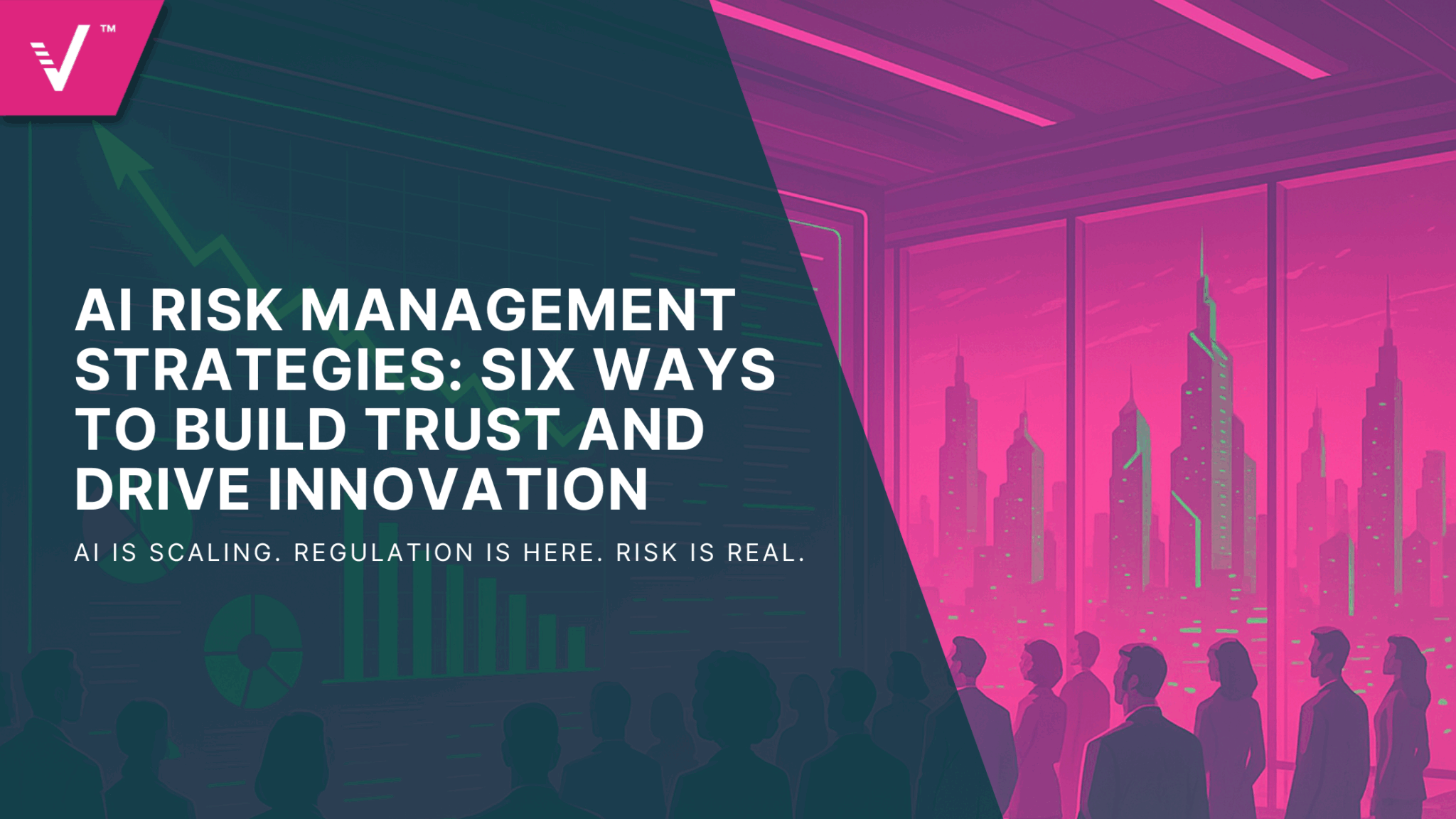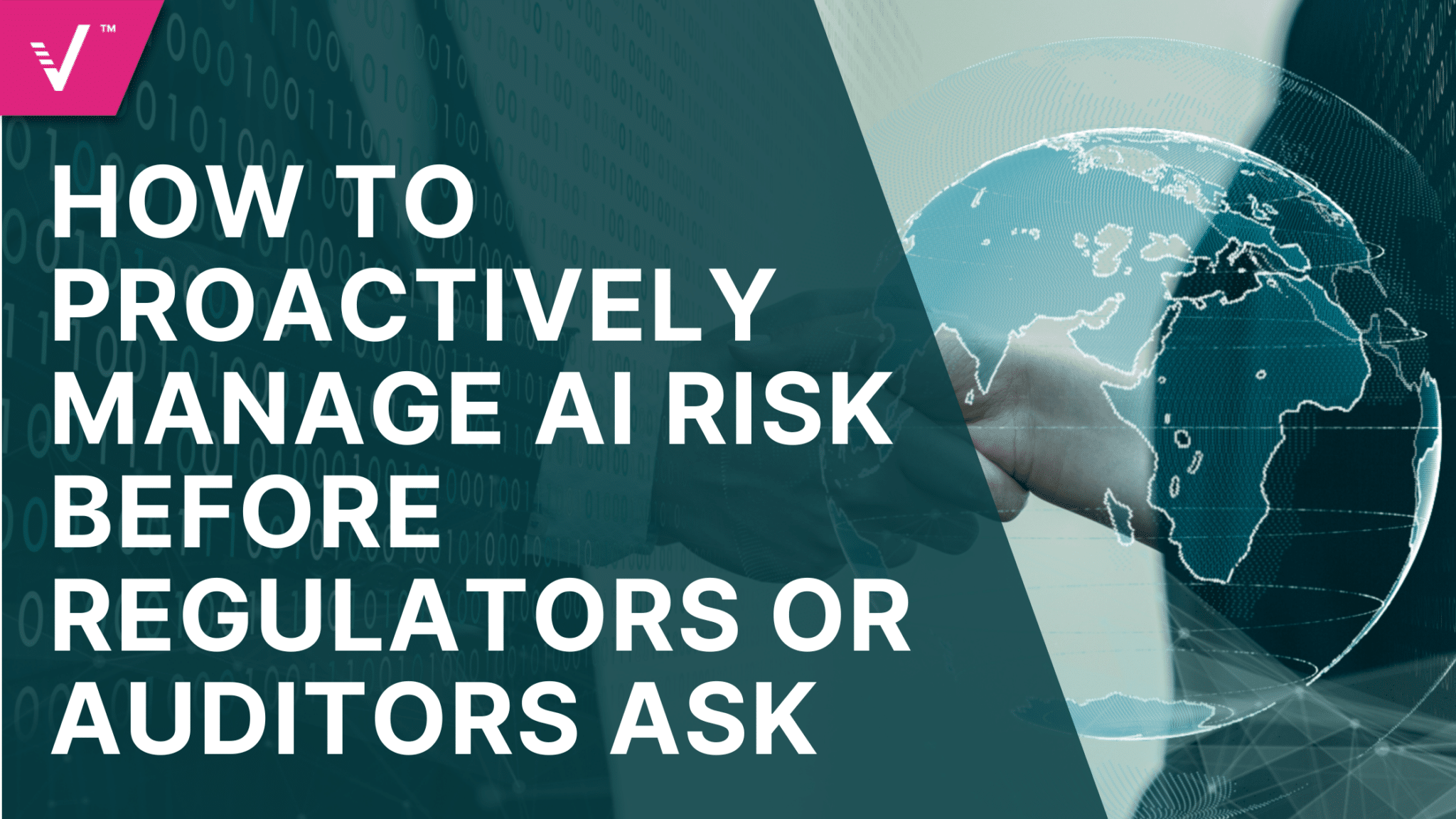AI Risk Management Strategies: Six Ways to Build Trust and Drive Innovation

The increase of effective AI across regulated sectors has brought unprecedented opportunity and unfamiliar risk. As organizations race to embed machine learning and generative models into core decision-making, traditional risk frameworks struggle to keep pace.
To uncover what separates AI risk leaders from those at risk of falling behind, Jan Larsen shared six strategies for managing AI risk effectively and molding AI governance into a competitive edge.
Compliance First, Innovation Next
Effective AI governance begins with alignment, paving the way for innovation. That alignment comes from complying with all pertinent regulations to operate safely in any environment. Today’s complex regulatory landscape — including the EU AI Act, SS 1/23, SR11-7, and E-23, to name a few — means that governance must be tailored to each institution.
“Before you’re far down the road, you might find there’s something you’ve invested in that is going to have compliance costs that weren’t anticipated” Larsen says. “So, this has to be the No. 1 priority”. By making sure your AI strategy meets current and anticipated legal obligations, Larsen notes, you’re able to build a trustworthy foundation.
Strong Governance Starts from the Inside Out
Knowing what AI you’re managing is also important. Visibility is often underestimated in AI risk management, yet it’s the start of an organized AI inventory.
“Making sure that internal governance [starts] with a solid understanding of where the models are is critically important,” Larsen adds. He explains that asking follow-up questions is vital: “Who’s using the models? For what reason? And what’s the risk classification of those models?”
This is an organizational challenge that, once overcome, could enable teams to operate within a unified governance framework to limit potential risk. Making AI inventory an integrated part of your effective AI framework puts institutions in a better position to scale responsibly and efficiently to meet regulator demands, Larsen says.
For more insight on managing AI, visit one of our previous posts: AI In Model Risk Management: A Guide For Financial Services
From Model Explainability to Performance
Traditional model risk management has long placed explainability at the center of governance, which is ideal for statistical models where simplicity and interpretability were seen as essential controls. Today, however, the power of effective AI lies in its complexity.
“Explainability has always been central to traditional model risk management,” Larsen notes. He adds that, unlike traditional models, AI models are “impervious to multicollinearity, which is part of why it’s so powerful. These models adapt to changing conditions quickly, so the explanation itself is constantly going to change.”
As AI models continue to gain traction, their adaptability is rendering traditional, static explanations less relevant. What’s true in one context may no longer apply in the next. Institutions must redefine their level of acceptable trust in AI, focusing less on explainability and more on consistent performance in real-world conditions.
Proactive Regulatory Engagement
In regulated industries, effective AI governance means treating regulators as strategic partners rather than just reviewers. Early, ongoing engagement with your regulators will help lay a foundation of shared knowledge, preventing misunderstandings that could lead to compliance issues down the line.
“Letting them in on the journey — including what you’re doing and what you’re planning to do — is a good policy that will help everything run smoothly and uncover expectations,” Larsen says. In highly-regulated sectors, credibility is built on preparation. Make sure you understand all parts of your effective AI portfolio before you explain it; approaching it as a two-way dialogue will show you’re prepared, credible, and flexible.
Level Up Your Compliance Game: Feature Announcement: Document Checker for Regulatory Compliance
Fairness and Transparency in AI Outcomes
The long-term success of effective AI also depends on how it’s perceived by the people it would impact, including customers, investors, and the wider public. Stakeholders need to believe that AI governance teams will manage risk properly and do so in a way that is fair and unbiased.
“I don’t mean statistical bias,” Larsen says. “I mean bias in a way that makes the consumer feel respected. I think that’s the key”. The burden of proof on whether an AI model is effective stems from concerns such as job displacement, the impact it has on an individual’s identity, and broader social implications of automated decision-making.
Institutions that actively monitor for unintended bias, communicate how their models make decisions, and are transparent about their results will gain trust. Effective AI will start to play a larger role in shaping customer experiences, meaning that fairness and clarity into its functionality is vital.
Your Future-Ready AI Strategy
In regulated industries, effective AI risk management is about building confidence across stakeholders and demonstrating that it can perform with the same judgment, fairness, and accountability expected of human decision-makers.
As Larsen notes, “AI is going to have to prove itself over a period of time to the point where people get comfortable,” and that level of trust won’t come overnight. Institutions that engage early, aligning their governance with social values, prioritize fairness at scale, and are transparent with their regulators will be best positioned to lead this next era of AI innovation.
Turn these practices into real outcomes. Talk to a ValidMind expert today to see how we help implement effective AI governance fast.


